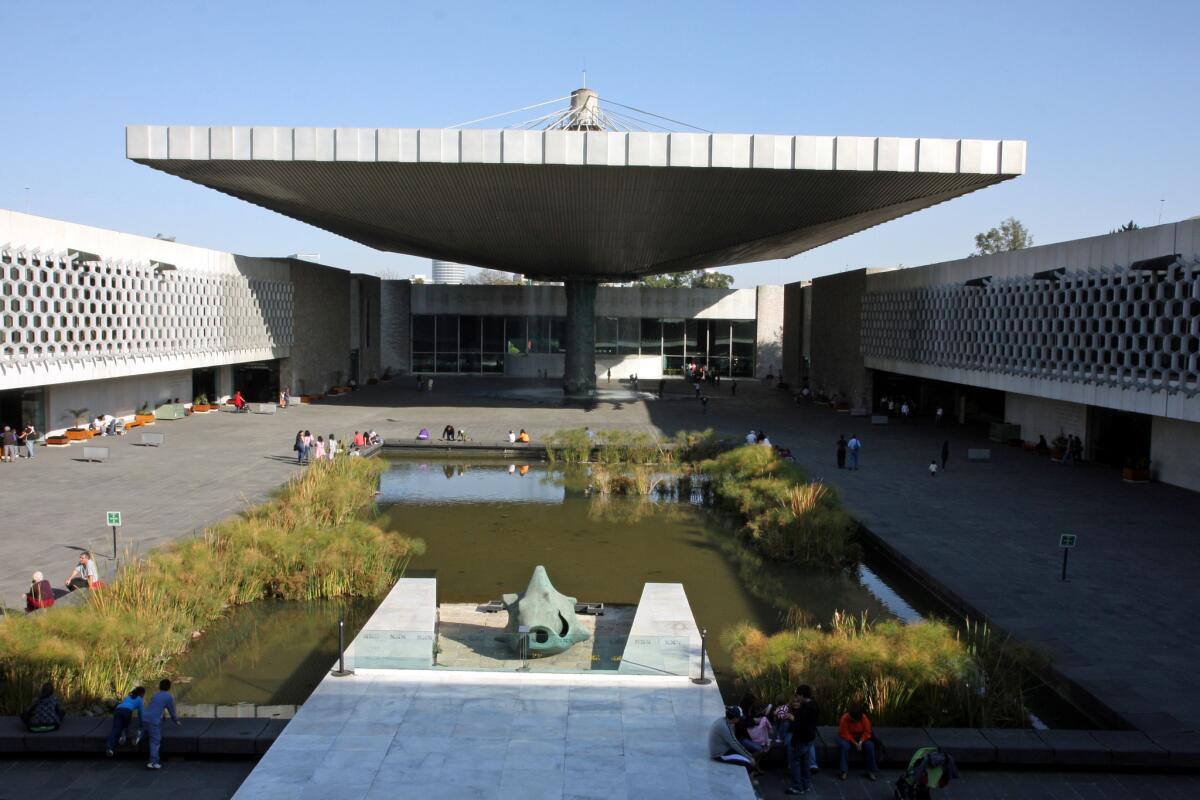A journalist remembers Mexican architect Pedro Ramirez Vazquez

Architecture and journalism, like politics, sometimes make strange bedfellows.
Pedro Ramirez Vazquez, the great Mexican builder who died April 16 at age 94, was responsible for many of the monumental public works that defined the Modernist look and aspirations of his country in the post-World War II era. Among his projects were the stunning Museum of Anthropology in Chapultepec Park, the Azteca stadium, the Basilica de Guadalupe (all in Mexico City), the Museo Amparo in Puebla and the Centro Cultural de Tijuana.
He also designed the headquarters of the Institutional Revolutionary Party (known by its Spanish-language initials, PRI), which dominated Mexico as effectively a one-party state from 1929 until 2000. The PRI was Ramirez’s most important patron, and without its support he almost certainly would not have acquired the stature he did.
PHOTOS: Arts and culture in pictures by The Times
But Ramirez’s close ties to the Mexican political establishment also put an enduring taint on his reputation. Ramirez was given the prestigious appointment of leading the organizing committee for the 1968 Olympic Games in Mexico City, which were meant to be seen as a world platform for Mexico’s ambitions as an up-and-coming global player.
In the months leading up to the Games, the government cracked down on student demonstrations, culminating in the army-led Tlatelolco massacre of at least 300 people at Mexico City’s Plaza of the Three Cultures, just days before the games started. While some called for an international boycott, Ramirez toed the government propaganda line, defending the crackdown and claiming journalists had exaggerated the brutality. (Octavio Paz, the Nobel Prize-winning Mexican writer and intellectual, resigned from the Mexican diplomatic corps in protest of the slaughter.)
CHEAT SHEET: Spring Arts Preview
Now the most famous and respected of those journalists, Elena Poniatowska, has stepped up in the Mexico City newspaper La Jornada to share some reminiscences of her interviews with Ramirez, one in 1967 and another in 1973. Poniatowska, who’s also a novelist, was one of the first reporters on the scene after the Tlatelolco massacre, and her landmark book, “La noche de Tlatelolco,” helped blow open the truth about what occurred there.
Yet in her La Jornada recollections, Poniatowska mentions Tlatelolco only in passing. Instead, the piece contains excerpts of Ramirez’s thoughts on how Mexico’s climactic extremes affect architectural design, and his appraisals of contemporaries such as Luis Barragan (who he pronounces “one of the great masters of authentic Mexican architecture”) and Jose Luis Cuevas.
It makes for diverting reading. But a deeper assessment of how key figures like Ramirez helped shape the connections, and contradictions, between Mexico’s political ruling class and the country’s pharaonical cultural projects of the postwar era, remains to be written.
ALSO:
The Sunday Conversation: Peter Sellars
‘Tannhauser’ production booed for using Nazi imagery
Tim Robbins and Wayne Kramer show support for arts in prisons
Follow me on Twitter: @RJohnsonLAT
PHOTOS AND MORE
COACHELLA 2013: Full coverage
THE ENVELOPE: Awards Insider
PHOTOS: Grammy top winners
More to Read
The biggest entertainment stories
Get our big stories about Hollywood, film, television, music, arts, culture and more right in your inbox as soon as they publish.
You may occasionally receive promotional content from the Los Angeles Times.











